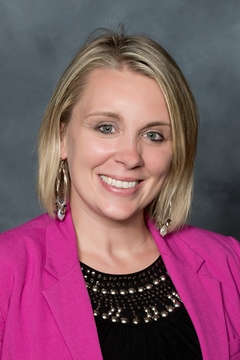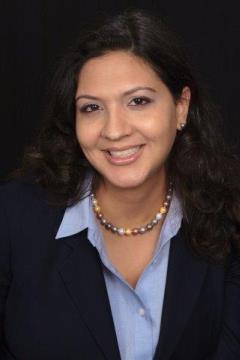E-Communities and STEM
Due to a shortage of science, technology, engineering, and mathematics (STEM) professionals, leaders call for efforts to engage all students in STEM fields through  real-world applications (Bureau of Labor Statistics, 2015; Feder, 2012). One critical question asked in K-12 formal education is, how do we engage students in their learning, make it meaningful, and make it applicable to their lives? This is a particularly important question for females and students of color who are often underrepresented in STEM fields. For many middle and high school students, STEM curriculum is disjointed, made up of isolated facts, and taught through linear thinking/procedural techniques used for memorization and passing a standardized test. However, researchers agree it is imperative to provide diverse youth opportunities to solve complicated real-world problems and examine solutions from multiple angles and perspectives (Cunningham & Hester, 2007; Spires, Lee, Turner, & Johnson, 2008). Interdisciplinary, design-based science and math lessons are exemplar opportunities for student-centered challenges that engage underrepresented students in authentic and culturally relevant solutions--an anomaly for students who are traditionally disconnected from STEM fields.
real-world applications (Bureau of Labor Statistics, 2015; Feder, 2012). One critical question asked in K-12 formal education is, how do we engage students in their learning, make it meaningful, and make it applicable to their lives? This is a particularly important question for females and students of color who are often underrepresented in STEM fields. For many middle and high school students, STEM curriculum is disjointed, made up of isolated facts, and taught through linear thinking/procedural techniques used for memorization and passing a standardized test. However, researchers agree it is imperative to provide diverse youth opportunities to solve complicated real-world problems and examine solutions from multiple angles and perspectives (Cunningham & Hester, 2007; Spires, Lee, Turner, & Johnson, 2008). Interdisciplinary, design-based science and math lessons are exemplar opportunities for student-centered challenges that engage underrepresented students in authentic and culturally relevant solutions--an anomaly for students who are traditionally disconnected from STEM fields.
 These opportunities serve as a goal for a newly developed community of practice that includes multiple stakeholders: urban middle school math and science teachers, their diverse and historically underserved students, local engineers, and university STEM teacher educators. E-Communities is a three-year ITEST grant awarded by National Science Foundation to Howard University’s School of Education and College of William and Mary’s School of Education to consider ways that engineering design can be used to teach standards-based curricula in Prince George’s County Public Middle Schools. E-Communities aims to (1) provide fellowships to middle school math and science teachers to lead students in engineering design and, (2) promote awareness and interest in the processes of engineers amongst mathematics and science teachers and their students. By providing teachers and students with mentorship from volunteer professional engineers, E-Communities aims to situate the engineering design process as a central tenet in formal classroom settings. Through this process, teachers will be able to more actively engage students with the Common Core State Standards of Mathematics (CCSSM) as well as the Next Generation Science Standards (NGSS). The expectation is that, ultimately, the project team will be able to provide a model program that can advance students’ creative problem solving skills, thereby developing the next generation of science, technology, engineering, or mathematics (STEM) workforce.
These opportunities serve as a goal for a newly developed community of practice that includes multiple stakeholders: urban middle school math and science teachers, their diverse and historically underserved students, local engineers, and university STEM teacher educators. E-Communities is a three-year ITEST grant awarded by National Science Foundation to Howard University’s School of Education and College of William and Mary’s School of Education to consider ways that engineering design can be used to teach standards-based curricula in Prince George’s County Public Middle Schools. E-Communities aims to (1) provide fellowships to middle school math and science teachers to lead students in engineering design and, (2) promote awareness and interest in the processes of engineers amongst mathematics and science teachers and their students. By providing teachers and students with mentorship from volunteer professional engineers, E-Communities aims to situate the engineering design process as a central tenet in formal classroom settings. Through this process, teachers will be able to more actively engage students with the Common Core State Standards of Mathematics (CCSSM) as well as the Next Generation Science Standards (NGSS). The expectation is that, ultimately, the project team will be able to provide a model program that can advance students’ creative problem solving skills, thereby developing the next generation of science, technology, engineering, or mathematics (STEM) workforce.
Support Your Teachers Bridging Community Professionals and Classrooms:
Between 2016 and 2018, teacher fellows and engineers will collaborate in five synchronous online courses to co-construct narratives that merge their own math and science stories with the culture and interests of students in Prince George’s County middle schools.
Accordingly, E-Communities is seeking engineers of color who can describe their experiences and journey to their profession. This virtual project aims to recruit approximately twenty engineers and scientists from various local and national agencies and corporations to share their stories with approximately 24 middle school teachers and 7000 students. This is an amazing opportunity for professionals to inspire middle schoolers to identify themselves as future STEM professionals. Our online modules are designed to support engineers in developing their stories and bridging their professional experiences to the classroom culture. If you are interested in participating as a STEM professional mentor in our community of practice, please let us know more about yourself at the following link: signup.e-communities.org. One of the members of the E-Communities team will personally reach out to you to discuss how you can participate.
For further information, please like our Facebook page or visit our website.
References:
Bureau of Labor Statistics. (2015, May). STEM crisis or STEM surplus? Yes and yes. Retrieved from http://www.bls.gov/opub/mlr/2015/article/stem-crisis-or-stem-surplus-yes-and-yes.htm
Cunningham, C. M. & Hester, K. (2007, March). Engineering is elementary: An engineering and technology curriculum for children. In American Society for Engineering Education Annual Conference & Exposition, Honolulu, HI.
Feder, M. (2012, December 18). One decade, one million more STEM graduates. The White House. Retrieved from https://www.whitehouse.gov/blog/2012/12/18/one-decade-one-million-more-stem-graduates
Spires, H. A., Lee, J. K., Turner, K. A., & Johnson, J. (2008). Having our say: Middle grade student perspectives on school, technologies, and academic engagement. Journal of Research on Technology in Education, 40(4), 497-515. doi: 10.1080/15391523.2008.10782518
